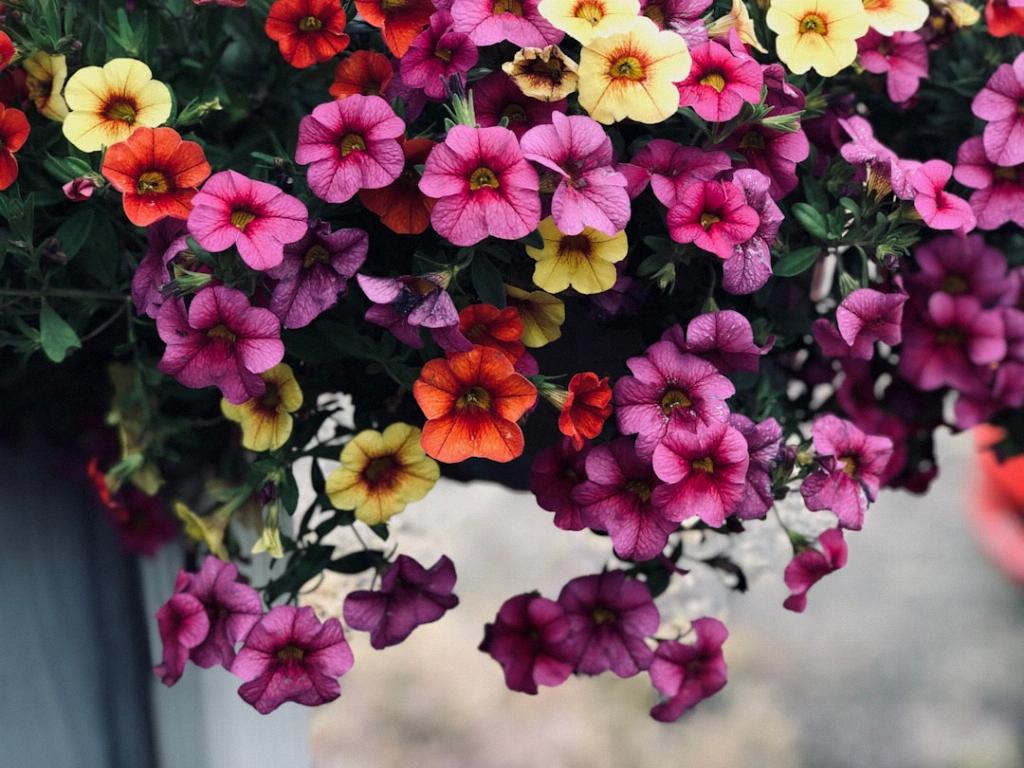Have you ever wondered why petunias have that sticky residue on their stems and leaves? It’s a common characteristic of these beautiful flowers that can leave many gardeners puzzled. Let’s delve into the reasons behind this stickiness and what it means for your petunia plants.
Natural Defensive Mechanism
The stickiness found on petunias serves as a natural defense mechanism against certain pests. When insects come into contact with the sticky substance, they may become trapped, making it difficult for them to move around the plant freely. This defense mechanism can help protect the plant from potential predators that could cause harm.
Aphid Attraction
Although the stickiness on petunias can be beneficial in warding off pests, it can also attract certain insects, such as aphids. Aphids are known to feed on the sap of plants, and the sticky residue on petunias can sometimes be a result of aphid feeding. It’s essential to inspect your petunias regularly for any signs of aphids to prevent them from damaging your plants.
Secretions from Glands
The stickiness on petunias is often produced by glands located on the stems and leaves of the plant. These glands secrete a sugary substance that is responsible for the stickiness. While it may seem like an inconvenience to humans, this secretion plays a crucial role in the plant’s defense and overall health.
Attracts Pollinators
Interestingly, the sticky residue on petunias can also serve a positive purpose by attracting pollinators. Bees, butterflies, and other insects are drawn to the sweet substance produced by the plant, making it easier for them to transfer pollen and facilitate the plant’s reproduction process. So, the stickiness can be a vital part of the plant’s reproductive strategy.
Environmental Factors
Environmental factors can also impact the stickiness of petunias. High humidity levels or excessive moisture in the air can sometimes lead to an increase in stickiness on the plant’s surface. Understanding how these factors affect your petunias can help you better care for them and maintain their health.
Sign of Plant Health
In some cases, the stickiness on petunias can be a sign of the plant’s overall health. Healthy petunias are more likely to produce this natural sticky substance, indicating that they are functioning well and able to defend themselves against potential threats. It’s essential to monitor the stickiness levels as a potential indicator of your plant’s well-being.
Protection Against UV Rays
Believe it or not, the sticky residue on petunias can also provide some protection against harmful UV rays. The sugary substance produced by the plant can act as a shield, helping to reduce the impact of excessive sun exposure on the plant’s delicate tissues. This added layer of defense showcases the versatility of petunias in adapting to their environment.
Proper Care Practices
To ensure that your petunias thrive and maintain their stickiness for the right reasons, it’s important to practice proper care techniques. Regularly inspect your plants for pests and diseases, provide adequate sunlight and water, and avoid over-fertilizing, which can disrupt the plant’s natural processes.
Balance in the Ecosystem
The stickiness on petunias is a reminder of the delicate balance that exists in the ecosystem. From warding off pests to attracting pollinators, this natural defense mechanism contributes to the overall health of the plant and its surrounding environment. Embracing this balance can lead to a greater appreciation for the intricate relationships within nature.
Plant Adaptations
Through the stickiness on their stems and leaves, petunias showcase remarkable adaptations that have evolved over time. These adaptations have enabled the plant to survive and thrive in diverse environments, demonstrating the resilience and ingenuity of nature. Observing these unique characteristics can deepen our understanding of the plant world.
Final Thoughts
In conclusion, the stickiness on petunias serves multiple purposes, from defense against pests to attraction of pollinators. Understanding the reasons behind this characteristic can provide valuable insights into the plant’s biology and the intricate interactions within the ecosystem. By caring for your petunias and appreciating their sticky nature, you can foster a deeper connection with these remarkable flowers in your garden.

